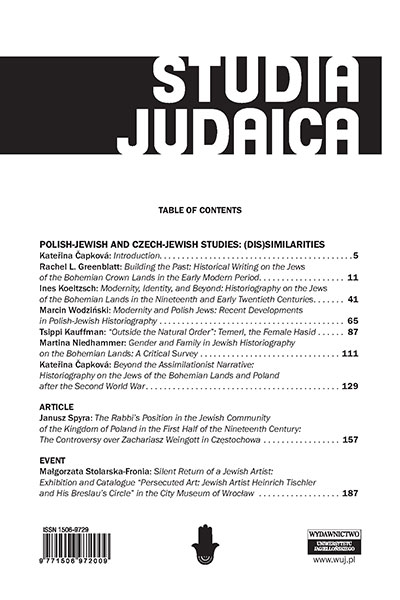Co czytano w czasie Zagłady? Refleksja nad powieścią Czterdzieści dni Musa Dah w kontekście żydowskiego ruchu oporu
What Was Being Read During the Holocaust? On the Novel the Forty Days of Musa Dagh in the Context of the Jewish Resistance Movement
Author(s): Weronika RomanikSubject(s): Jewish studies, Political history, Social history, WW II and following years (1940 - 1949), Fascism, Nazism and WW II, History of the Holocaust, Philology
Published by: Wydawnictwo Uniwersytetu Jagiellońskiego
Keywords: Jewish resistance movement; Second World War; ghetto; Franz Werfel; Musa Dagh; Mordechai Tenenbaum-Tamaroff; Białystok Ghetto;
Summary/Abstract: The article examines a possible perception of Franz Werfel’s novel Forty Days of Musa Dagh by Jewish readers in the ghettos during the Second World War. The archival documents from that time as well as postwar testimonies of Holocaust survivors indicate that the novel was popular especially among young people and members of the Jewish resistance movement. People in the ghettos could easily relate to the events described in a book about the Armenian genocide and even identify themselves with Werfel’s characters. The core documents for the analysis are materials from the Underground Archive of the Białystok Ghetto, including the writings of Mordechai Tenenbaum-Tamaroff.
Journal: Studia Judaica
- Issue Year: 20/2017
- Issue No: 40
- Page Range: 209-235
- Page Count: 27
- Language: Polish

